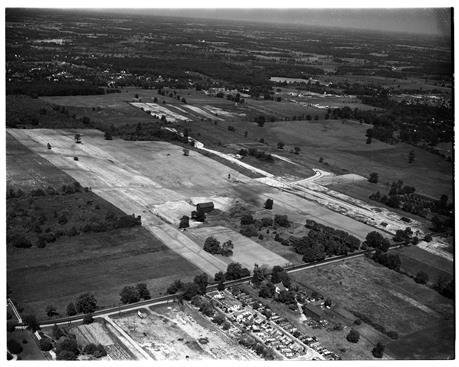History
Ann Arbor's city parks sit on the ancestral and traditional homelands of several indigenous Native peoples. Read a
land acknowledgement from the city and learn more about the early history of the land
here.
The park was created in 1952 when the city bought the land from Emelie and Arthur Drappawitz. The funds to buy the land were provided by the Buhr Tool Machine Company and the R. & B. Tool Machine Company of Saline. The park was named after Joseph Frank Buhr, the founder of the Buhr Tool Machine Company. Buhr is also the namesake of the Joseph Buhr Memorial Fund, started that same year to buy land for park purposes. The park contains a
memorial to Mr. Buhr. In 1959 the northern portion of the park was given to Ann Arbor Public Schools to become the site of Allen Elementary School. The school was named after John Allen, one of the city's founders. The pool and bathhouse were built in 1968. Cobblestone Farm, the historic property next to Buhr Park, was acquired by the city in 1972. The farm's usage dates back to 1844.

Buhr Park as seen from above in 1951

Swimmers at Buhr Park Pool in 1969
The first wet meadow was planted by volunteers including local preschoolers in 1997. A stormwater master plan was developed in 1999 with the goal of making Buhr a zero-runoff park. In 2004, local middle school students worked with the Buhr Park Children's Wet Meadow Project to install the second wet meadow. In 2010 a third wet meadow was added near the sidewalk between Essex Road and Allen Elementary School. In 2012 the main parking lots were rebuilt and designed with features to contribute to the zero-runoff goal of the stormwater master plan.
Read more about the Children's Wet Meadows in these articles from Natural Area Preservation (NAP) newsletters:
2002 The Buhr Park Children's Wet Meadow by Jason Frenzel
2015 Park Focus: Buhr Children's Wet Meadows by Catie Wytychak
View more historical articles and photographs courtesy of the AADL
here. View a historical summary of Buhr Park's development from 1952-1970
here.
